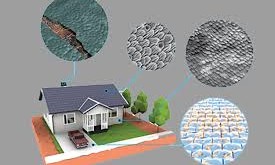The cities of today are built with concrete and steel between they are responsible for as much as a tenth of worldwide carbon emissions. Before they ever reach a construction site, both steel and concrete must be processed at very high temperatures – which take a lot of energy. And …
Read More »Yearly Archives: 2020
Next Robot revolution are robots with smart skin that can touch and feel
Robots have already become an indispensable part of our lives. Robots have revolutionized auto manufacturing, making plants safer and products more reliable — and reducing the number of people involved in the process. However, even inside a modern auto plant, robots have not been able to replace the human touch …
Read More »Militaries giving thrust to Biofuels as part of renewable drive and for cheap super-fuel for missiles and hypersonic planes
Biofuels are regarded as promising alternative to satisfy growing energy demands. Biomass derived biodiesel and bioethanol can be successfully utilized in modem vehicle engines with little or no modifications and thus contribute to lower combustion emissions in comparison to the former. Adequate production not only serves as long term replacement …
Read More »Militaries develop Morphing military Wings and Aircrafts to provide optimal performance in reconnaissance to bombing missions
The design of aerodynamic airfoils is optimized for certain conditions. For instance, the shape of the wings of fixed-wing aircrafts are designed and optimized for a certain flight condition (in terms of altitude, speed, aircraft weight, etc.). However, these flight conditions vary significantly during the flight. Currently, aircraft are provided …
Read More »Augmented reality displays moving towards smart contact lenses to enable vision of invisible computing
Smart glasses refer to wearable computing devices that add information to what the user sees. These devices function in a way similar to mobile phones and tablets and have the ability of processing and implementing various programs and applications. A majority of the smart glasses currently used in the market …
Read More »Micro and Nano UAVs technologies enable them to be employed with armies in battlefield
Militaries are now employing Micro, Mini & Nano UAVs into their operations. They provide situational awareness to a small group of soldiers by flying several stories above them for 10-20 minutes at a time before placed back into a pocket to recharge. These will be used to carry out tasks …
Read More »Advances in AI Assistants enabling US army to develop cognitive agents helping Soldiers Deal with Information Overload
Virtual assistants are the cutting edge of end user interaction, thanks to endless set of capabilities across multiple services. Today, we can ask virtual assistants like Amazon Alexa, Apple’s Siri, Google Now to perform simple tasks like, “What’s the weather”, “Remind me to take pills in the morning”, etc. in …
Read More »Portable atomic clock technologies including chip-scale optical frequency synthesizer to enable ultra accurate GPS
Optical atomic clocks are at the pinnacle of time measuring devices, losing less than one second every ten billion years. Currently though, they are massive devices, weighing hundreds of kilograms. In order to have an optimal practical function that could be utilised by your average person, their size needs to …
Read More »Armies employing Micro and Nano UAVs for situational awareness, engaging light skinned vehicles, and enemy UAV’s
Unmanned aerial vehicle technology is advancing rapidly, and drones are getting smaller by the day. Militaries are now employing Micro, Mini & Nano UAVs into their operations. They provide situational awareness to a small group of soldiers by flying several stories above them for 10-20 minutes at a time before …
Read More »With Cyber becoming operational domain of warfare, Militaries establish Cyber commands and develop offensive cyberwarfare capabilites
Cyber warfare has developed into a more sophisticated type of combat between countries, where you can destroy communications and other digital infrastructure of adversaries. Cyberwarfare involves digital attacks on the networks, systems and data of another state, with the aim of creating significant disruption or destruction. That might involve destroying, altering …
Read More » International Defense Security & Technology Your trusted Source for News, Research and Analysis
International Defense Security & Technology Your trusted Source for News, Research and Analysis








